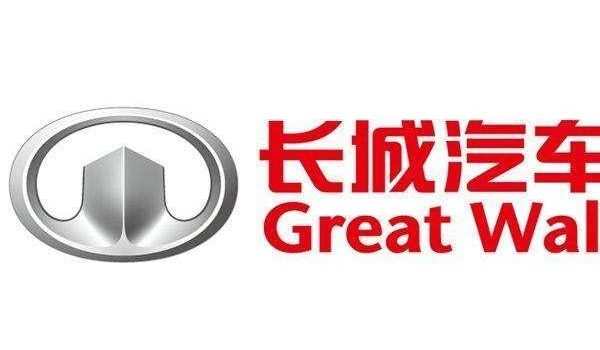When the conflict between Russia and Ukraine continued to escalate, Wei Jianjun, who was far away in the office of the chairman of Baoding Great Wall Motor in Hebei, also ushered in his moment of choice.
For the auto industry, which relies heavily on upstream and downstream supply chains, the economic sanctions imposed on Russia by NATO-led countries are deadly. Along with the soaring international oil and natural gas prices, as well as the crisis of public opinion constrained by political risks, Russia’s already weak auto industry is weakening all the time.
Therefore, a drama in which multinational car companies flee collectively is inevitable. Up to now, well-known car companies including Mercedes-Benz, BMW, Audi, and Volvo have either adopted relatively euphemistic methods such as dismissing employees and suspending sales, or simply stated their positions directly and announced their withdrawal from the Russian market.
However, it is obviously not what Wei Jianjun wants to have Great Wall Motor follow the “broken arm” behavior of abandoning his family and business.
First, Russia’s rich product resources are a hotbed for automobile manufacturing. As the world’s second largest oil producer, Russia also has the world’s top five infrastructure construction scale; Russia is also rich in aluminum, nickel, palladium, platinum and other precious metals, among which nickel is the key material for the production of power batteries.
At the same time, the purchasing power provided by the resources of more than 140 million people is also the fundamental strength that makes Russia directly different from other European countries in the eyes of major multinational car companies. Some Chinese car companies with overseas strategies also set their sights on this vast land very early, including Haval, Chery and Geely under Great Wall Motors.
Second, compared with overseas markets in other regions, Russia has a special significance for Great Wall Motors. Although the sales volume of Great Wall Motors in Russia is not high, the data of 39,000 vehicles in 2021 will account for about 3% of its total global sales, but it is appropriate to compare this data before sales in other overseas markets. ‘s first place.
In 2019, Great Wall Motor’s 3.5 billion RMB plant in Tula Oblast, Russia was officially completed. Wei Jianjun also ushered in his own highlight moment, and signed the next stage of the investment agreement under the witness of the heads of state of China and Russia.
It is worth noting that the investment of Great Wall Motors in the Tula state plant is real money, and it is on par with the Xushui No. 2 and No. 3 plants built at that time with advanced technology; the Tula state plant is still the current Chinese car company. The only manufacturing plant built in Russia that includes the full process of stamping, welding, painting, and final assembly.
The market feedback from Russia to Great Wall Motors is also particularly gratifying. In 2021, it took only half a year for Great Wall Motors to complete a revenue of more than 2.2 billion yuan, which is much higher than the data for the whole year of 2020.
Third, the balance of the Russian auto market is tilting. Unlike the situation where a hundred schools of thought contend in the Chinese auto market, most of its market shares are firmly controlled by overseas brands, except for the Russian independent brand Lada. In 2021, the sales of Volkswagen, Skoda, Mercedes-Benz, BMW, Toyota, Nissan, Kia and Hyundai alone will account for half of the Russian market.
On the sales list, Chinese car companies are closely behind the above-mentioned brands, and the Haval brand under Great Wall Motors ranks first among them, with a significant increase. Today, when other overseas brands are leaving one after another, Great Wall Motors may be able to take the lead in opening a new situation with the advantages of the Tula state factory after the local situation eases.
Although high investment often means high returns, high risk is also an unavoidable problem. At present, the operating risks faced by Great Wall Motors in the Russian market are being amplified as the conflict between Russia and Ukraine intensifies.
First of all, it is the investment project of Great Wall Motors in Russia. In addition to the Tula state plant, Great Wall Motors also plans to continue to increase investment in Russia in the first half of 2021, signing a contract with the Russian government to invest in the construction of a plant. Unfortunately, the project has not yet started, and it is still unknown when the huge amount of money that has been invested will be paid.
Secondly, the exchange rate fluctuations caused by the conflict also caused Great Wall Motors to suffer a lot of financial losses for no reason. Previously, Great Wall Motors’ consistent practice was to convert rubles earned from Russia directly into yuan and include them in the company’s income statement. Based on data from the last three weeks alone, the ruble has depreciated by 50% against the yuan.
This means that every time Great Wall Motor sells a car, it will lose half of its profits just because of the exchange rate issue without raising the price of the product.
Furthermore, there is a relatively obscure problem. At the beginning of 2021, the WEY brand of Great Wall Motors just officially announced that it will start from Germany to prepare for its entry into Western Europe and other countries in the future. You know, Germany is also one of the 19 member states of NATO.
Therefore, this seems to have become a trade-off between its different brands and different overseas markets.
In addition, under the economic sanctions, the Russian people are constantly affected by the weak spending power and enthusiasm, and the supply problems and political factors faced by the globalization of the supply chain. This problem encountered by Great Wall Motors is no easier than other brands.

